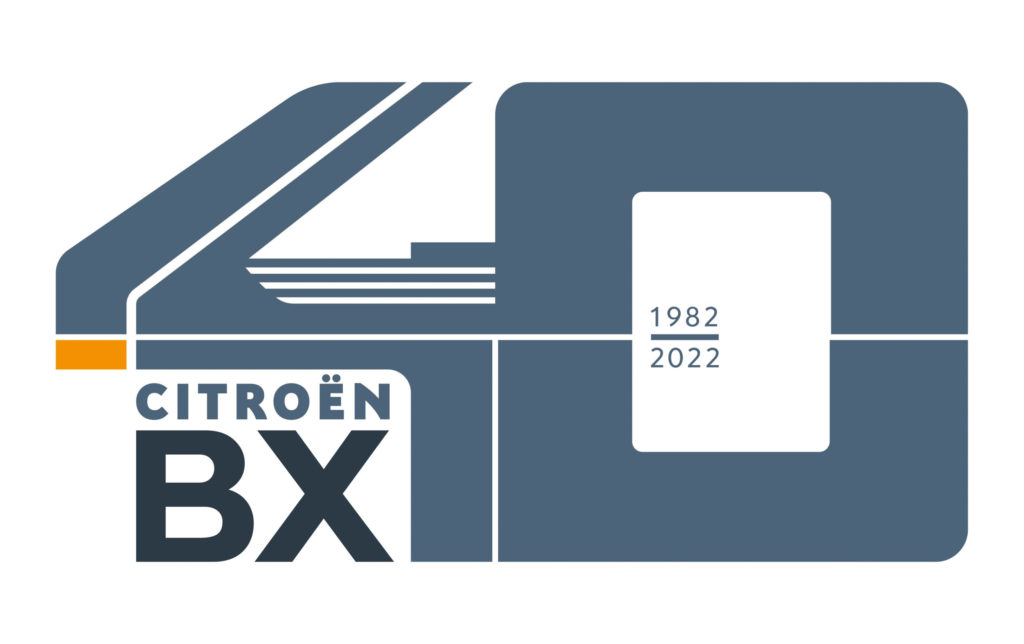It was September 23, 1982, when night fell and a large crowd filled the Champ-de-Mars below the Eiffel Tower adorned with double chevrons and draped in a grand display of fireworks, their eyes fixed on the first floor of the Eiffel Tower, where a huge wooden box with the inscription “Voilà la nouvelle Citroën” hung.

In a dizzying light and sound show, the wooden box was slowly lowered to the ground. The box finally opened up to reveal the BX, thus beginning its fabulous career to a standing ovation.
A few days later, on September 30, 1982, the 69th Paris Motor Show opened its doors in the Porte de Versailles exhibition centre and officially marked the start of sales of the BX, which became one of the undisputed stars of the fair.
THE “XB” PROJECT Launched in 1978 under the codename “XB”, the Citroën BX project had its specifications finalized in November 1979. The main goals of the future BX were to ensure that it would be recognized as a modern, unconventional vehicle with an emphasis on innovation.
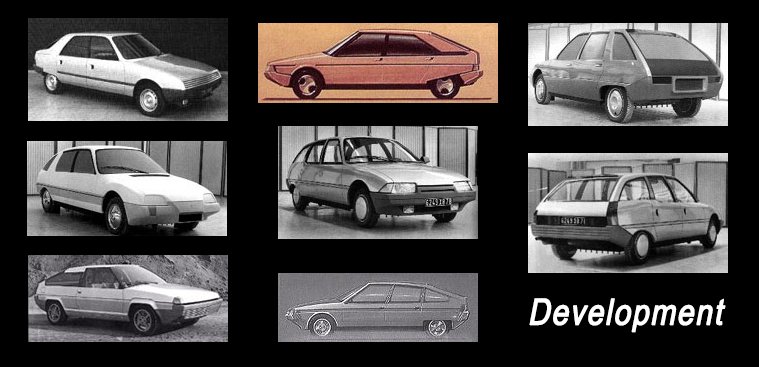
With the BX, Citroën set itself a double goal: to present the entry into the upper middle class vehicle market and have it be the successor to the GSA. To achieve this, the BX relied on cutting-edge technology to guarantee comfort, dynamism and economy, as well as a new shape with a groundbreaking design. Citroën approached famous Italian coachbuilder Bertone to design the BX. The designer Marcello Gandini (father of the Miura, the Countach and the Stratos) then proposed an original shape – one that was robust but devoid of any eccentricity. It stood out in the automotive landscape of the time but became the symbol of the BX.
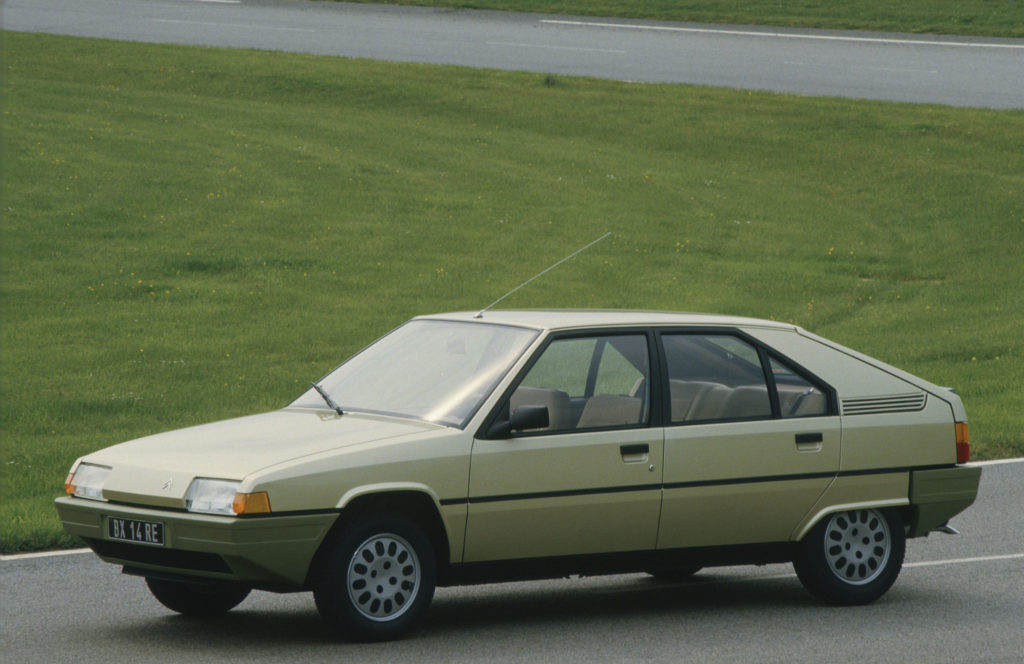
The interior was eye-catching too, with a CX-inspired dashboard with signature touches like satellite controls on either side of the steering wheel and the backlit tachometer. Resolutely modern and packed with attractive features, the BX immediately won over the press, seduced Citroën clientele and won new customers: it was a huge commercial success.
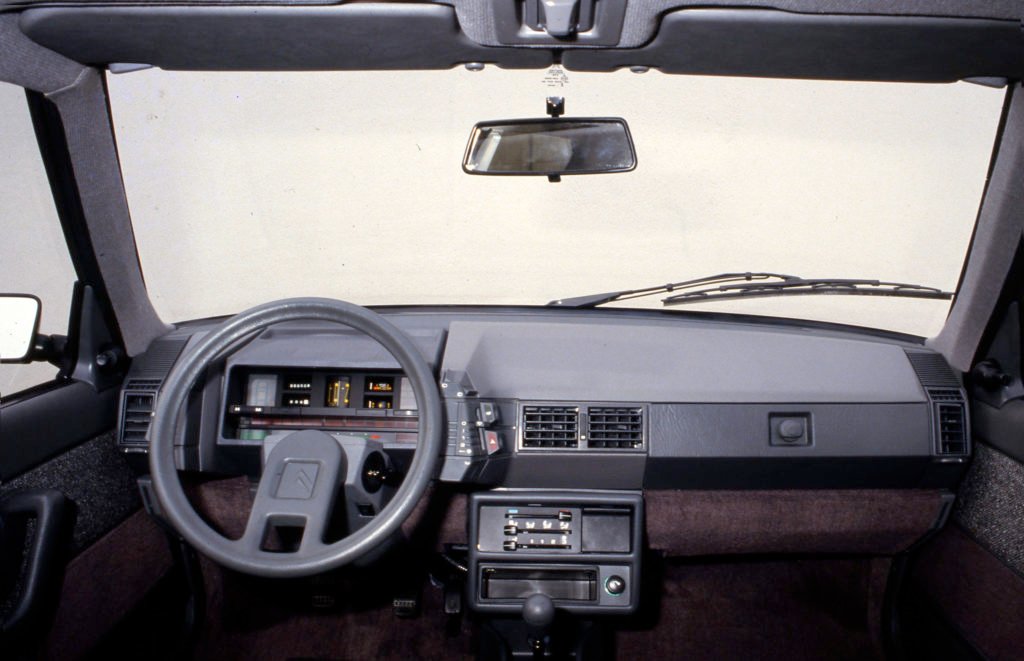
The BX was intended to be a transversely engined vehicle, with limited mass to ensure good acceleration and low fuel consumption, which represented a cost saving in the context of the time. However, unlike lesser Citroën models, the BX featured a hydropneumatic suspension system to ensure comfort and impeccable road holding.
The BX had a 5-door hatchback body. The development was carried out by the Vélizy technical centre, which invested heavily in CAD (computer-aided design) to accelerate design convergence and optimize performance. Thanks to this method, the BX achieved a good aerodynamic coefficient of 0.34. It was innovative in the use of composite materials for parts such as the bumper, trunk lid, hood and side panels and weighed just 885 kg.

As the first vehicle of the PSA era, the engines of the BX were taken over from the group’s own drive bank. With powerful engines since its earliest release (62hp and 72hp 1360cc, 90hp 1580cc), the BX was surprisingly dynamic.
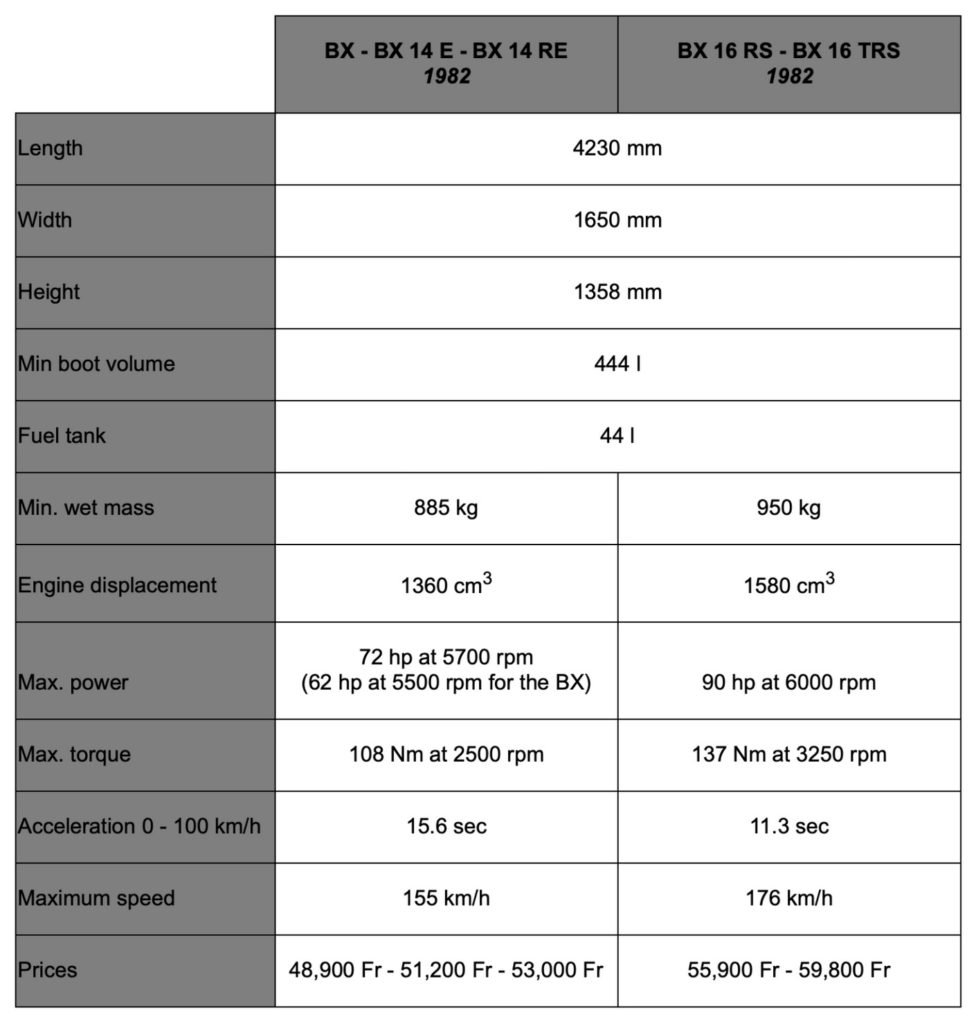
Built at the Rennes La Janais plant in Brittany and the Vigo plant in Spain, it sold more than 2,337,016 million units before production finally ceased in June 1994 and contributed to the Citroën brand’s revival in the 1980s.
The BX’s 12 years on the market saw numerous body changes. In 1985, an elegant family station wagon – 17 cm longer than the sedan and called the Evasion – was added to the range. A major makeover in 1987 gave the BX a slightly less angular exterior, an all-new dashboard, sunroof, air conditioning, digital instruments, velvet upholstery, alloy wheels, digital clock and on-board computer.
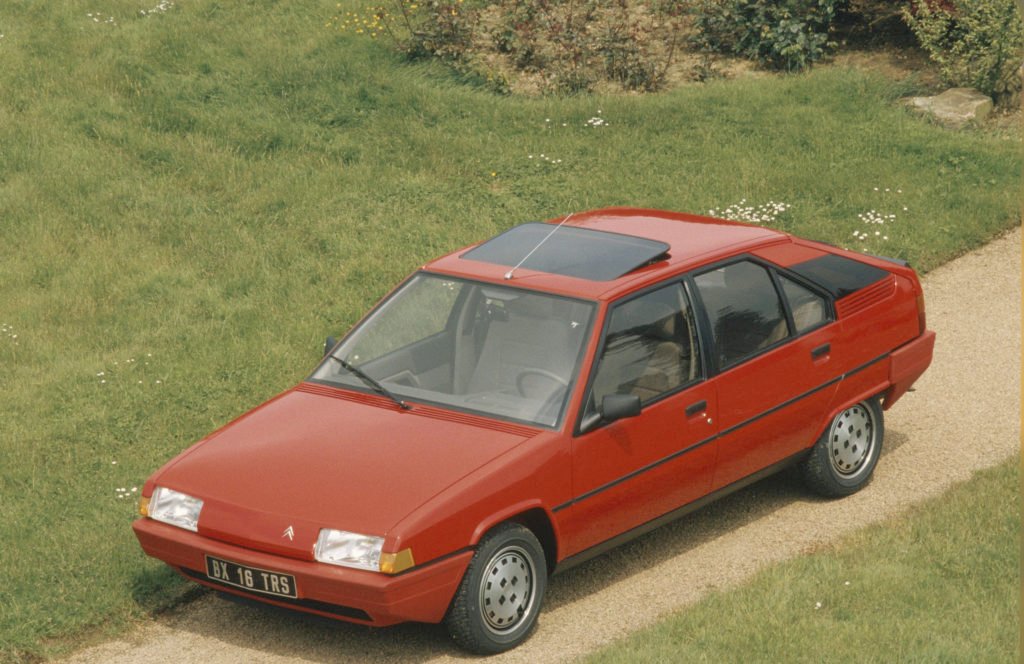
Mechanically, the BX remained state-of-the-art with up to 160 hp engines, electronic injection, diesel engine options, and automatic transmission option, and offing permanent four-wheel drive and ABS braking.
From the street version of the BX, Citroën also offered a Group B race car that we featured here in Citroënvie.

